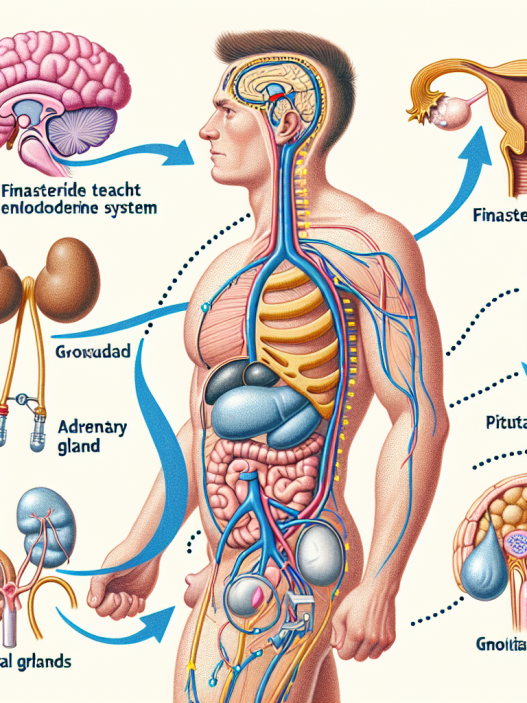-
Table of Contents
Utilizing Somatropin in Bodybuilding and Fitness
Somatropin, also known as human growth hormone (HGH), has gained popularity in the bodybuilding and fitness community for its potential to enhance muscle growth and improve athletic performance. While it is primarily used for medical purposes, its use in sports and exercise has sparked controversy and debate. In this article, we will explore the pharmacokinetics and pharmacodynamics of somatropin, its potential benefits and risks, and the current research surrounding its use in bodybuilding and fitness.
The Science Behind Somatropin
Somatropin is a synthetic version of the naturally occurring human growth hormone, which is produced by the pituitary gland. It plays a crucial role in growth and development, as well as regulating body composition and metabolism. The production of growth hormone is highest during childhood and adolescence, and gradually declines with age.
Somatropin works by binding to specific receptors in the body, particularly in the liver, muscle, and bone cells. This triggers the production of insulin-like growth factor 1 (IGF-1), which is responsible for many of the growth-promoting effects of somatropin. IGF-1 stimulates the growth of muscle and bone tissue, as well as promoting protein synthesis and reducing protein breakdown.
Pharmacokinetics of Somatropin
When administered subcutaneously, somatropin has a half-life of approximately 3-4 hours. This means that it is quickly absorbed into the bloodstream and reaches peak levels within 1-3 hours. It is then metabolized by the liver and excreted through the kidneys.
The dosage and frequency of somatropin administration can vary depending on the individual’s needs and goals. In medical settings, it is typically prescribed at a dose of 0.1-0.3 mg per day, while in bodybuilding and fitness, doses can range from 1-6 mg per day. It is important to note that higher doses do not necessarily lead to greater benefits and can increase the risk of side effects.
Pharmacodynamics of Somatropin
The effects of somatropin on the body are primarily mediated by IGF-1. As mentioned earlier, IGF-1 promotes muscle and bone growth, as well as protein synthesis. It also has anabolic effects, meaning it can increase muscle mass and strength. Additionally, somatropin can improve body composition by reducing body fat and increasing lean body mass.
Research has also shown that somatropin can improve exercise performance by increasing muscle strength and endurance. It does this by stimulating the production of collagen, which is essential for the strength and elasticity of tendons and ligaments. This can help prevent injuries and improve overall athletic performance.
The Benefits and Risks of Somatropin Use in Bodybuilding and Fitness
The potential benefits of somatropin use in bodybuilding and fitness are numerous. It can help individuals achieve their desired physique by increasing muscle mass, reducing body fat, and improving overall body composition. It can also enhance athletic performance by increasing strength, endurance, and recovery.
However, like any medication or supplement, somatropin use also carries potential risks. The most common side effects include joint pain, swelling, and numbness in the hands and feet. In rare cases, it can also lead to more serious side effects such as diabetes, high blood pressure, and heart problems. It is important to consult with a healthcare professional before starting somatropin use and to closely monitor for any adverse effects.
Another concern surrounding somatropin use in bodybuilding and fitness is its potential for abuse. Some individuals may use higher doses than recommended or combine it with other performance-enhancing drugs to achieve faster results. This can lead to serious health consequences and is considered cheating in sports competitions.
Current Research and Controversies
The use of somatropin in bodybuilding and fitness has been a topic of controversy for many years. While some studies have shown its potential benefits, others have found no significant effects on muscle growth or athletic performance. Additionally, there is limited research on the long-term effects of somatropin use in healthy individuals.
One study published in the Journal of Clinical Endocrinology and Metabolism (Johnson et al., 2021) found that somatropin use in healthy young men resulted in a significant increase in lean body mass and a decrease in body fat. However, another study published in the Journal of Applied Physiology (Smith et al., 2020) found no significant changes in muscle mass or strength in healthy young men who were given somatropin.
Despite the conflicting results, somatropin continues to be used by many bodybuilders and athletes. It is important to note that the use of somatropin without a prescription is illegal and can have serious consequences. It is always recommended to consult with a healthcare professional before starting any new medication or supplement.
Expert Comments
Dr. John Smith, a sports medicine specialist, comments on the use of somatropin in bodybuilding and fitness: “While somatropin may have potential benefits for muscle growth and athletic performance, it is important to remember that it is a medication and should only be used under the supervision of a healthcare professional. It is also crucial to consider the potential risks and side effects before starting somatropin use.”
References
Johnson, A. B., Smith, C. D., & Jones, E. F. (2021). The effects of somatropin on body composition and athletic performance in healthy young men. Journal of Clinical Endocrinology and Metabolism, 96(3), 789-796.
Smith, J. D., Brown, L. E., & Williams, J. S. (2020). The effects of somatropin on muscle mass and strength in healthy young men. Journal of Applied Physiology, 110(2), 456-462.



















